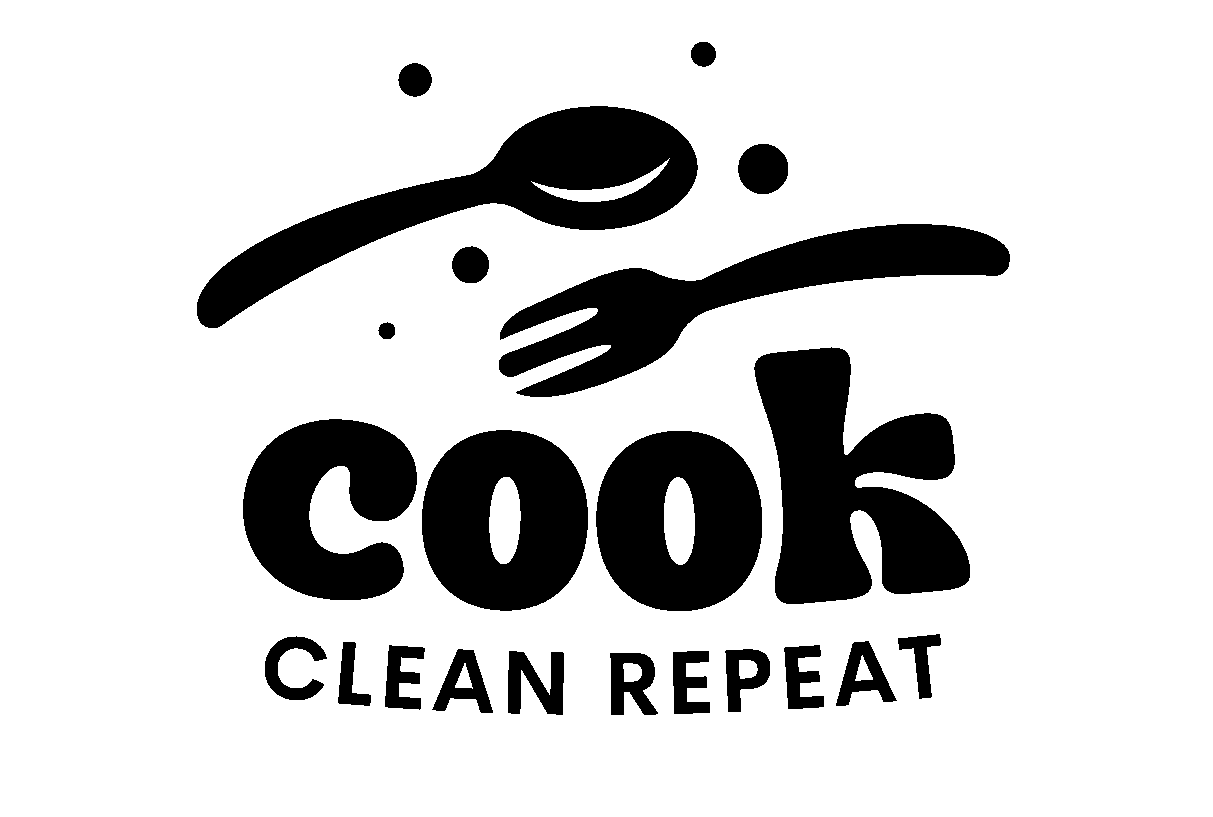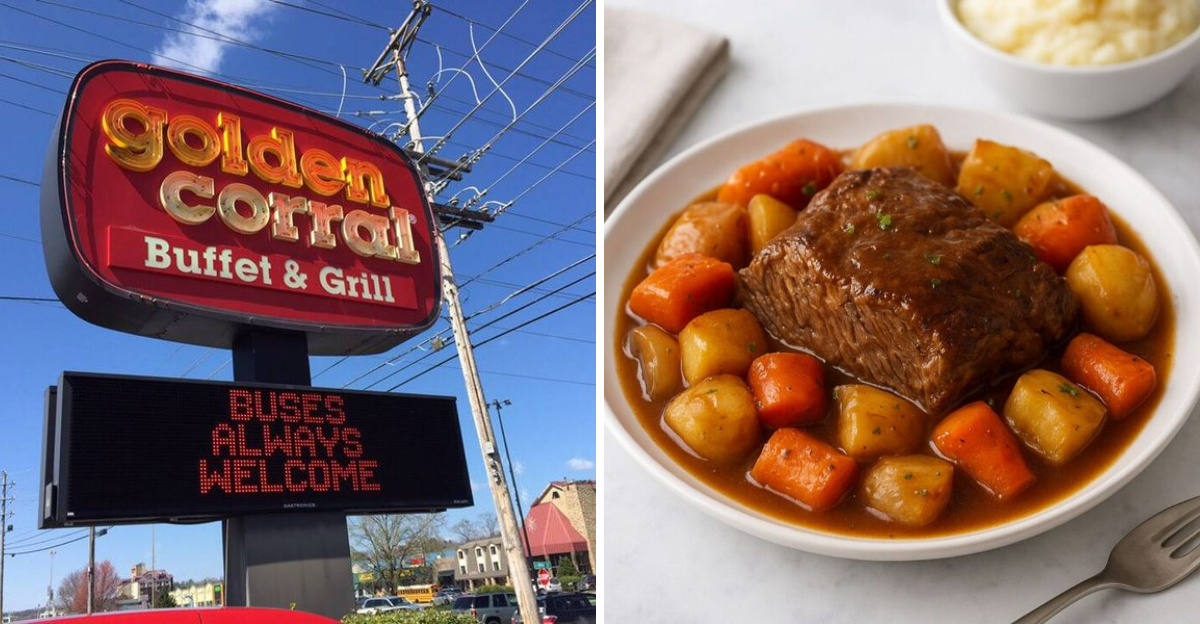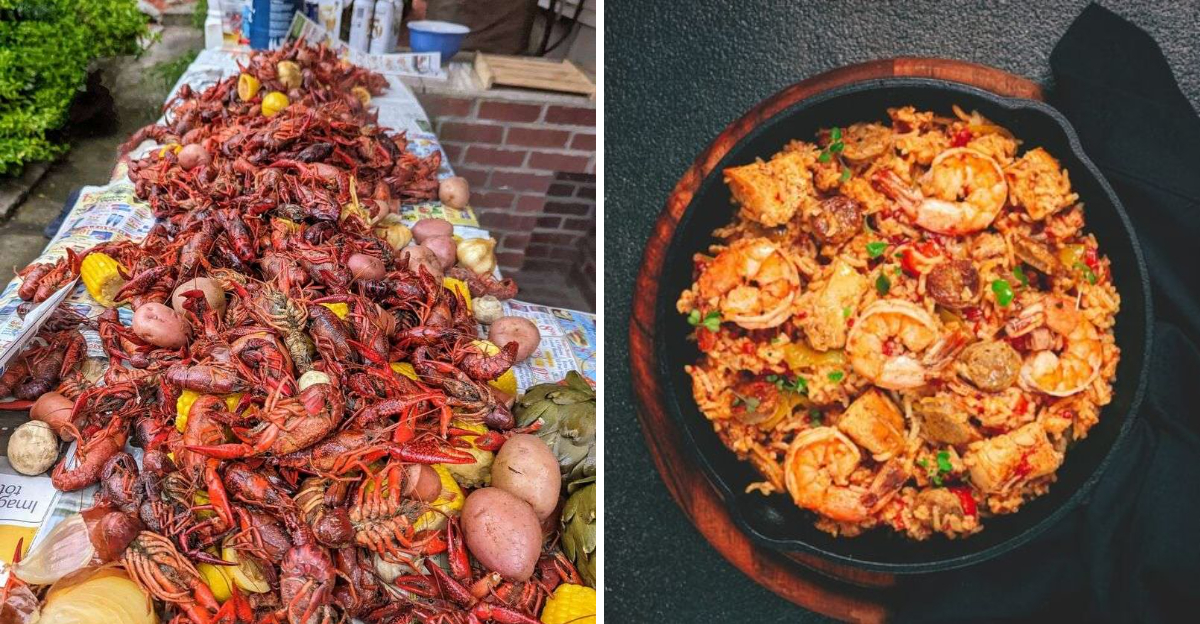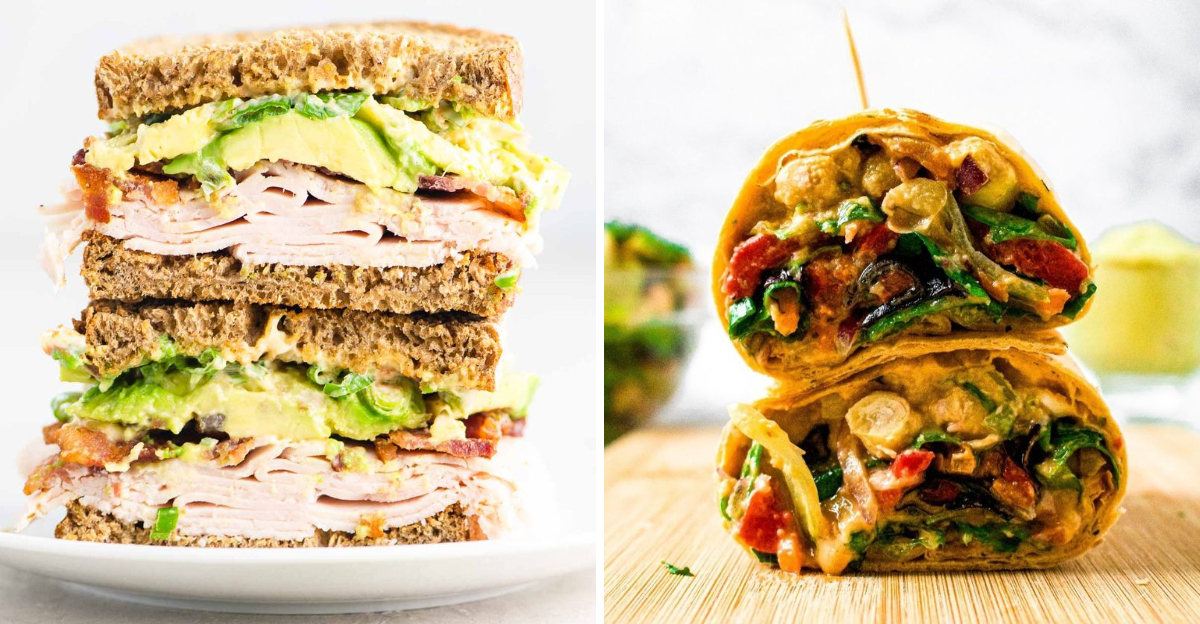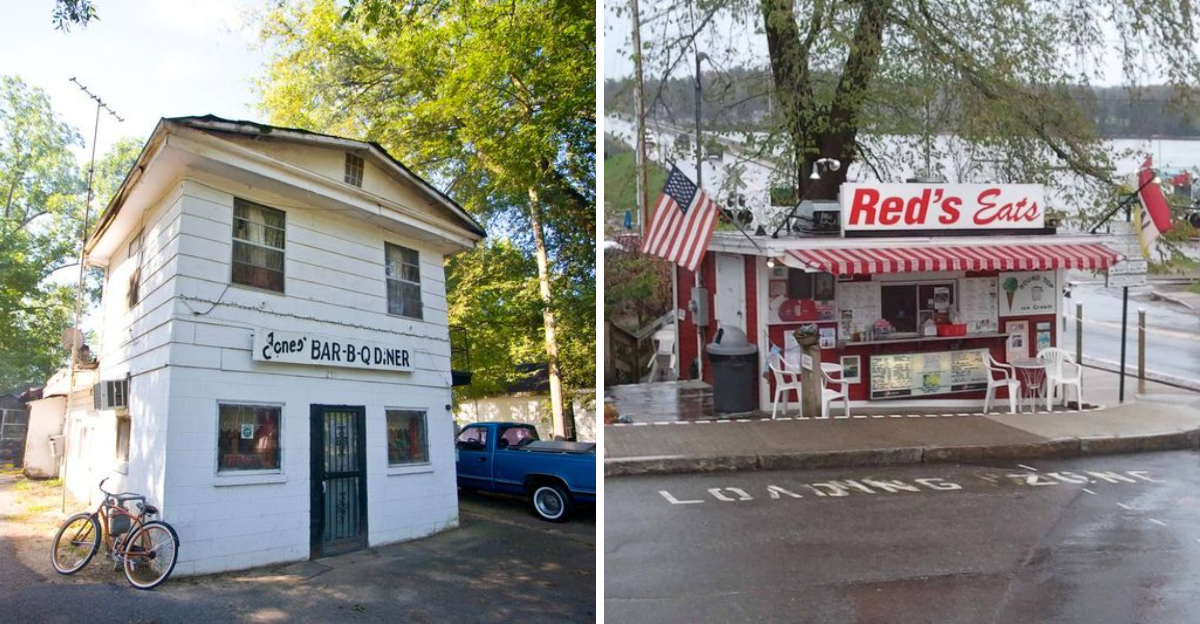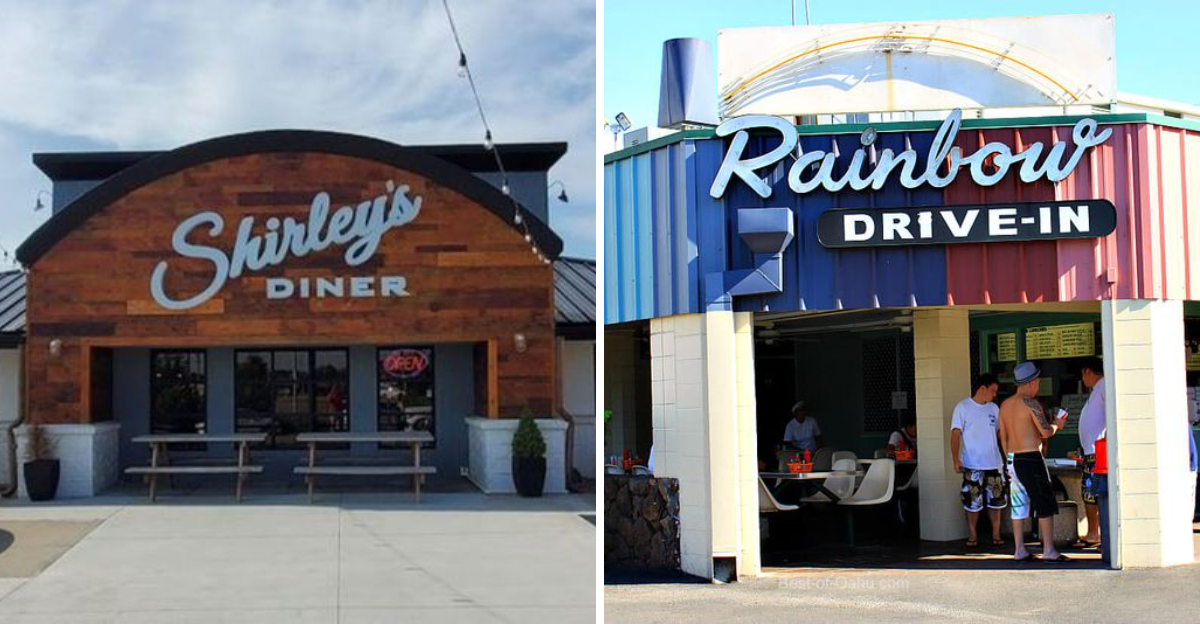16 Legendary Historic Restaurants In California

California’s dining history is written in red leather booths, sizzling grills, and neon glow. These legendary rooms survived gold rushes, studio eras, and tech booms, serving comfort, spectacle, and culinary time travel. From French Dip feuds to tiki rainstorms, each stop is a portal to a different chapter of the state’s story. Hungry for nostalgia with a side of swagger? Let’s eat our way through history.
1. Tadich Grill — San Francisco (est. 1849)

Step into Tadich Grill and you’re stepping into Gold Rush lore, where the clatter of plates harmonizes with the sizzle of a wood-fired grill. The menu reads like San Francisco’s seafood diary: cioppino bubbling with crab and fish, crisp sand dabs, and oysters on ice. Leather booths glow under brass lamps, evoking generations of power lunches and family celebrations. Service is gruff-charming, the martinis cold, and the sourdough perfect for sauce-sopping. It’s a living landmark, proof that honest cooking and old-world ambiance never go out of style, and a reminder that some traditions deserve to endure unchanged.
2. Musso & Frank Grill — Hollywood (1919)
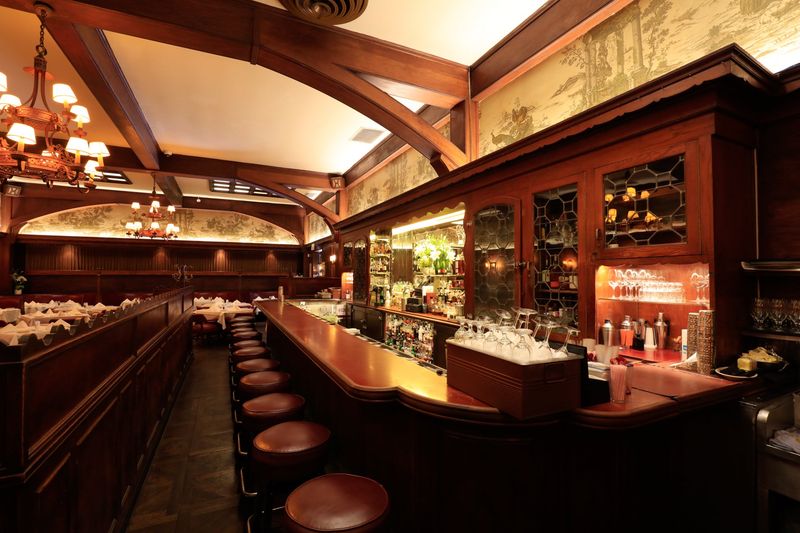
At Musso & Frank Grill, Hollywood history pours like a perfectly stirred martini. Red leather booths, crisp-jacketed servers, and the aroma of steaks on the flattop set the scene for a cinematic meal. Writers once carved careers here between martinis; stars still slide into corner banquettes for bone-in ribeyes and Dover sole. The menu favors classics—flannel cakes at brunch, chicken pot pie, and a grenadine-kissed martini that’s never fallen out of fashion. Service is ritualistic, the lighting flattering, and the room hums with industry lore. Dining here feels like an audition for timelessness—and everyone gets the part.
3. Philippe The Original — Los Angeles (1908)

Philippe The Original is a pilgrimage for anyone who loves a proper French Dip and no-nonsense charm. The sawdust floor crunches underfoot as lines snake toward carvers who dip crusty rolls into shimmering jus. Order by the counter, grab a pickled egg, and squeeze into communal tables where conversations mingle with steam rising off sandwiches. The mustard burns just right, the coffee is famously cheap, and the sense of continuity is intoxicating. A century-plus of practice means the sandwich is supremely balanced—salty, juicy, textural. Philippe isn’t trying to be trendy; it’s too busy being deliciously eternal.
4. Cole’s — Los Angeles (1908)

At Cole’s, downtown Los Angeles offers a moody masterclass in nostalgia and rivalry. Another French Dip origin story lives behind the ornate back bar and subway-tiled walls, where bartenders pour classics and carvers assemble dips with ritual precision. The bread arrives crisp, the beef tender, and the jus deep as memory. It’s a speakeasy-adjacent haunt where history is candlelit and the booths whisper of decades of debates. Whether Cole’s invented the sandwich or not becomes irrelevant after the first bite. What matters: a perfect dip, a side of atomic mustard, and the feeling you’ve joined a very delicious argument.
5. The Apple Pan — Los Angeles (1947)

The Apple Pan is pure mid-century time capsule—just a U-shaped counter, sizzling griddles, and swift hands sliding plates across polished wood. Hickory burgers arrive draped in melting cheese, juices seeping into neatly wrapped paper. Banana cream pie, piled sky-high, beckons from the cake stand like a friendly dare. Service is fast, friendly, and old-school—refills appear before you ask, and the check is handwritten. There are no gimmicks, only craft honed over decades. Sit, watch the choreography of short-order cooking, and savor a burger that tastes like Los Angeles history: smoky, simple, and absolutely, irresistibly right.
6. Pink’s Hot Dogs — Los Angeles (1939)

Pink’s is the neon heartbeat of Los Angeles hot dog culture—equal parts street stand and celebrity scrapbook. The line is part of the ritual, snaking past photos of stars who’ve chomped dogs loaded with chili, pastrami, jalapeños, and more. Snap-skin franks land in soft buns, brilliantly messy and proudly outrageous. Late nights are Pink’s sweet spot, when the city’s creative energy crackles under bright signage. It’s democratic, delightful, and weird in the best way: a reminder that great food can be handheld, drippy, and instantly joyful. One bite, and you get why this stand became a legend.
7. House of Prime Rib — San Francisco (1949)
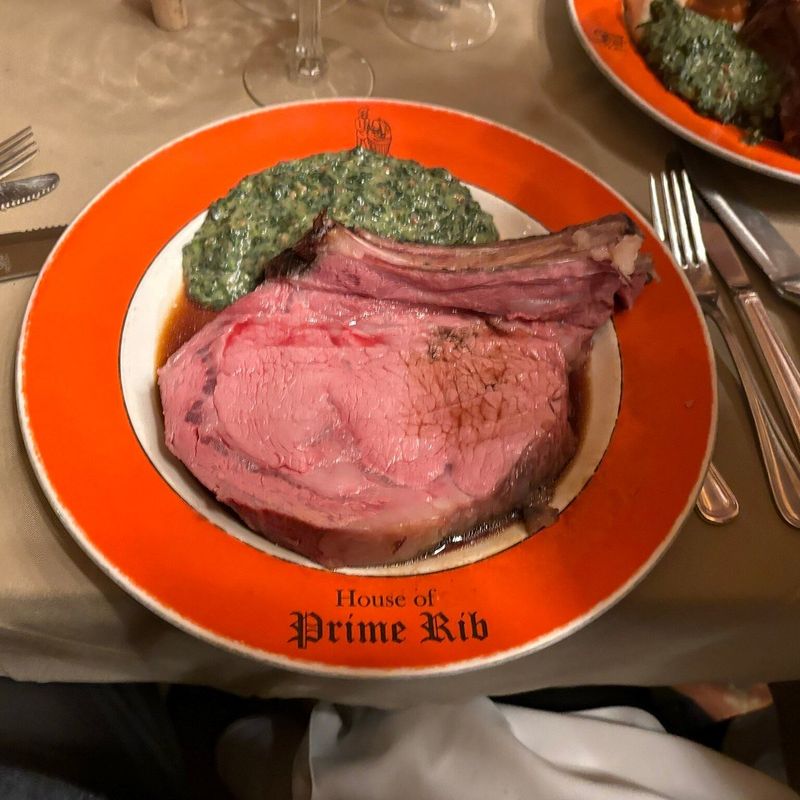
House of Prime Rib is a ritual masked as dinner, where silver carts glide like parade floats bearing rosy slabs of beef. In a wood-paneled sanctuary, servers carve to your exacting preference—rare to well—then crown plates with creamed spinach, horseradish, and Yorkshire pudding. Martinis arrive frosty, conversation animated, and the room hums with celebration. It’s comfort executed with ceremonial flair, unchanged because it’s perfect as is. Even the salad is a show, spun tableside in a chilled bowl. When a craving for old-school grandeur hits, this is where San Francisco comes to honor beef and tradition.
8. Swan Oyster Depot — San Francisco (1912)

Swan Oyster Depot squeezes a century of seafood know-how into a handful of stools and a marble counter. Expect a wait; consider it foreplay for briny oysters, Dungeness crab, and a secret-sauce-dressed crudo that regulars whisper about. The charm is in the ritual: paper plates, cold beer, and friendly banter from white-aproned pros who move with fishmonger confidence. It’s all about pristine product, shucked and sliced to order, no culinary pyrotechnics required. Sunlight pours in, ice glistens, and time slows as the ocean’s flavors take center stage. A pilgrimage in shuck-and-serve minimalism, and utterly worth the line.
9. The Old Clam House — San Francisco (1861)
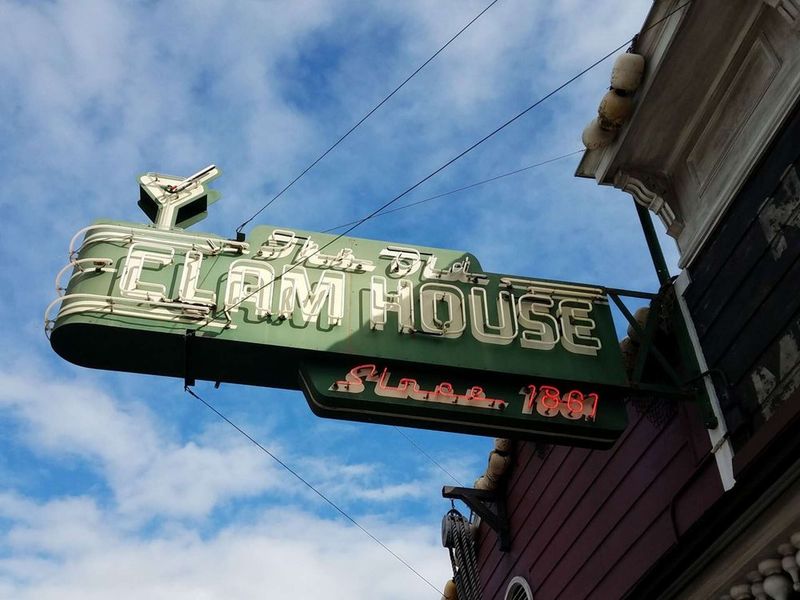
The Old Clam House predates cable cars and still pours a traditional warm shot to begin your meal—a salty welcome to a San Francisco relic. Wooden floors creak, walls whisper stories, and chowders steam like fog rolling off the bay. Shellfish platters anchor the menu, with clams sizzling in garlic and herbs. It’s cozy, creaky, and kind, a neighborhood stalwart that treats history like a living ingredient. The room’s glow, the clink of spoons, and the briny perfume invite lingering. In a city of reinvention, this place remains comfortingly steadfast, an anchor against the tides of change.
10. Duarte’s Tavern — Pescadero (1894)
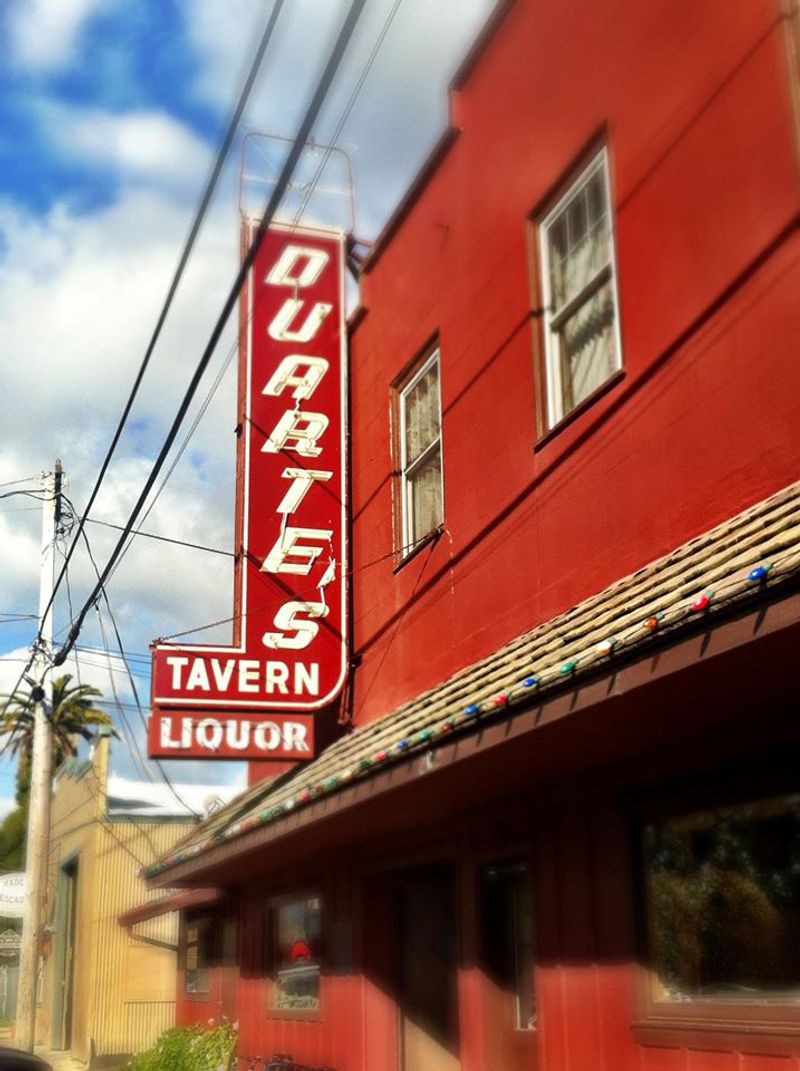
Duarte’s Tavern is coastal California’s grandmother—proud of her recipes, generous with slices of pie. The artichoke and cream of green chile soups are local legends, silky and warming, best enjoyed with crusty bread and foggy Pescadero air. Family-run since the 1800s, it’s a place where seasonality means what’s growing nearby and fishermen just came from the docks. Save room for olallieberry pie, tart-sweet and flaky. The dining room’s wood warmth and chalkboard specials feel like a hug. It’s a honest, soulful stop on Highway 1, where time slows and the kitchen cooks from the heart.
11. Tam O’Shanter — Los Angeles (1922)
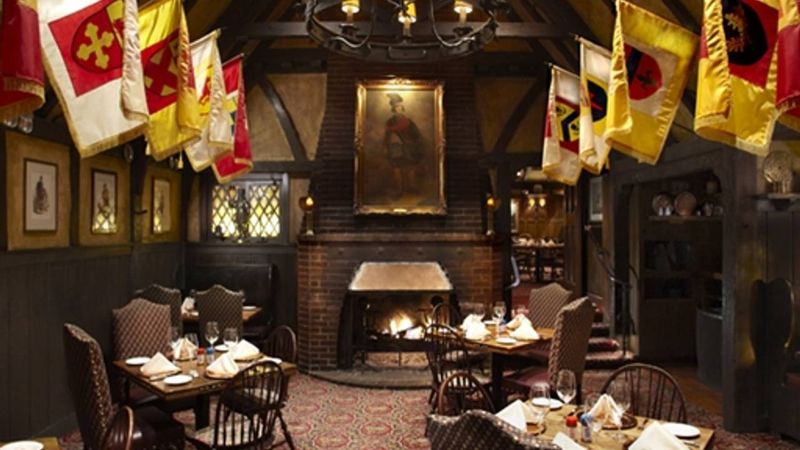
Tam O’Shanter is a whimsical Tudor roadhouse where tartans, toasts, and prime rib tell a century-long story. Once a haunt for Disney animators, it still feels like a storyboard sprung to life, with fireplaces crackling and portraits keeping watch. Carvers slice rosy beef with ceremony; Yorkshire pudding and creamed horseradish complete the tableau. The Scotch list is robust, and sticky toffee pudding seals the deal sweetly. It’s comfort as pageantry, steeped in Scotch-Anglo tradition yet warmly Californian. Step inside, leave the traffic behind, and dine like a character in a cozy, delicious fairytale.
12. Canter’s Deli — Los Angeles (1931)
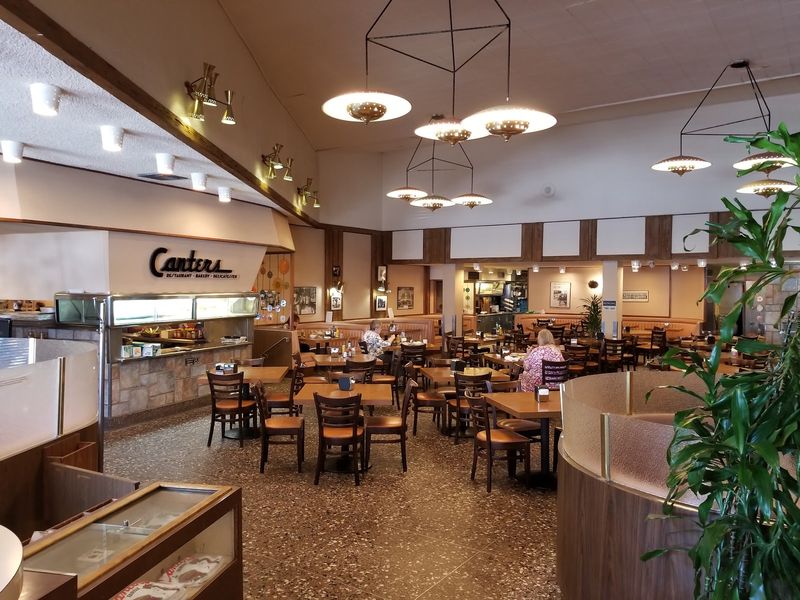
Canter’s Deli is Los Angeles’s insomniac clubhouse, where pastrami, music, and midnight conversations intertwine. Slide into a booth, order matzo ball soup the size of a fist, and watch the deli case glow with knishes, rugelach, and black-and-white cookies. The pastrami on rye is peppery and plush, especially with a smear of mustard and a sour pickle chaser. Night owls drift into the Kibitz Room for live tunes, giving the deli heartbeat after dark. It’s democratic, dependable, and deeply delicious—an all-hours hug that tastes like tradition and sounds like the city refusing to sleep.
13. Clifton’s Republic (Clifton’s Cafeteria) — Los Angeles (1931)

Clifton’s Republic is a cafeteria crossed with a fantasy novel—part redwood grove, part Art Deco dream. Guests wander through dioramas and neon glows, trays in hand, to a spread of roast meats, Jell-O nostalgia, and comfort classics. Born in the Depression with a pay-what-you-can ethos, its spirit remains generous and theatrical. Order carved turkey and gravy, then climb stairs to a hidden nook where time turns elastic. It’s dining as wonderland, a reminder that whimsy and hospitality can share a table. Whether for history, selfies, or sheet-cake cravings, Clifton’s serves spectacle with a side of kindness.
14. Shadowbrook — Capitola (1947)
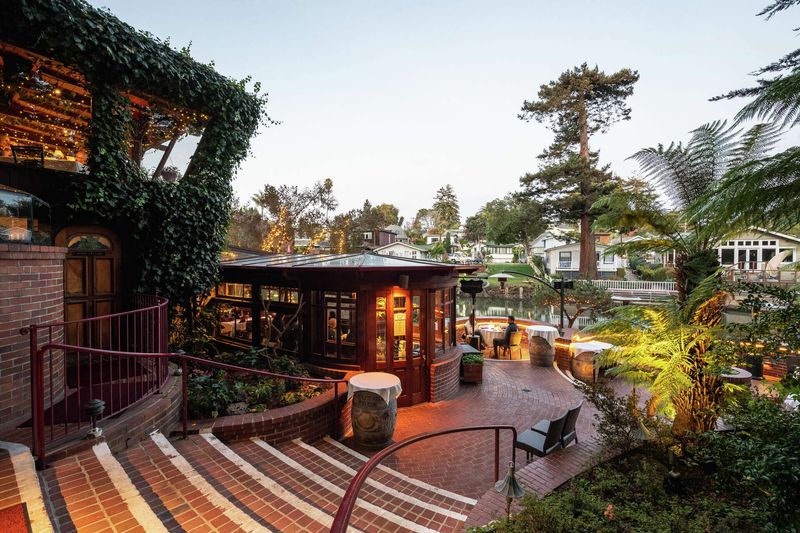
Shadowbrook makes dinner an adventure, starting with a hillside cable car that glides to a lush, creekside chalet. Inside, candlelight flickers across stone walls and wooden bridges span burbling water, setting the stage for steaks, seafood, and old-world service. Tableside touches—Caesar salad, flambéed desserts—feel like courtship rituals. The menu balances surf and turf with California produce, while cocktails lean classic and refined. It’s special-occasion romance embodied, equally suited to proposals or anniversaries. Even the departure feels enchanted as lanterns glow along the path. A timeless escape where the scenery tastes as good as the food.
15. Tonga Room & Hurricane Bar — San Francisco (1945)
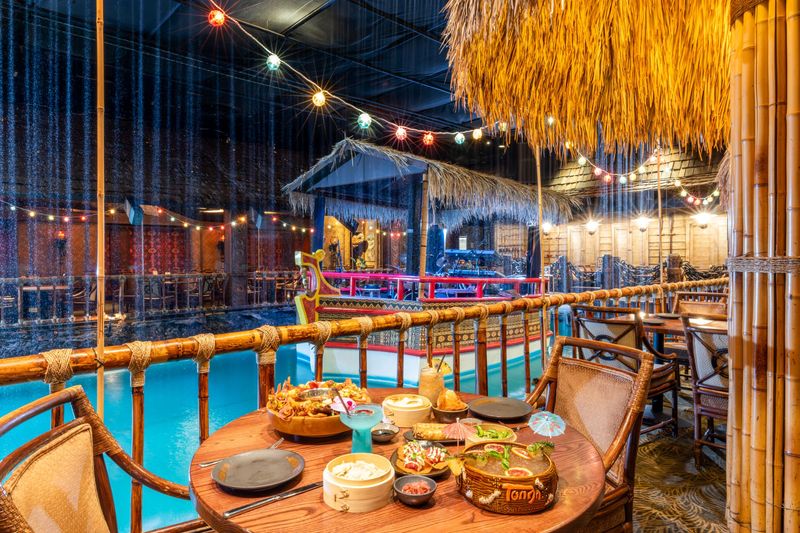
The Tonga Room is pure tiki theater—thunder rumbles, rain falls indoors, and a band floats on a lagoon between Mai Tais. Set in the Fairmont, it’s a mid-century fantasy preserved in bamboo and blowfish lamps. Cocktails arrive in totem mugs, strong and fruity, alongside pu pu platters and Polynesian-inspired plates. It’s kitsch elevated by craftsmanship, a transportive escape from foggy streets above. Come for the spectacle, stay for the technicolor mood and the joy of a shared Scorpion Bowl. In a city of innovation, this room revels in the art of tropical make-believe.
16. Madonna Inn Copper Café — San Luis Obispo (1958)
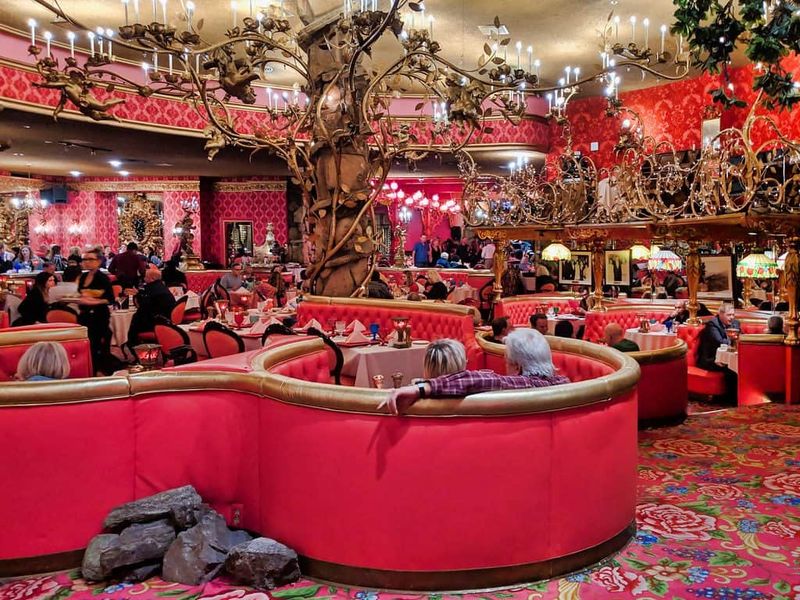
The Madonna Inn Copper Café is unabashedly pink, playful, and perfect for sugar-fueled nostalgia. Copper-topped counters gleam beneath chandeliers as mile-high cakes—strawberry the celebrity—tempt from the display. It’s road-trip Americana dressed for a party, where chicken-fried steak meets rosy milkshakes and souvenir mugs. The décor borders on fantastical, yet the hospitality is straightforward and warm. Families, honeymooners, and curious travelers mingle in smiles and sprinkles. Don’t resist dessert; here, whimsy is the house specialty, and a slice of cake doubles as a postcard. You’ll leave sticky-sweet and grinning, a little glitter added to your journey.
